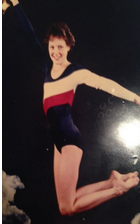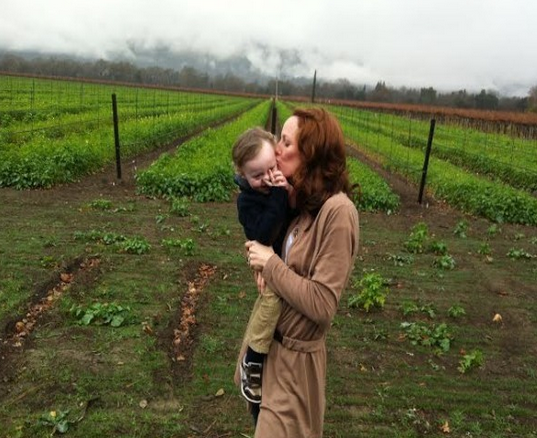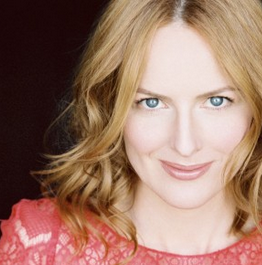IMDB Summary: 15 years after murdering his sister on Halloween night 1963, Michael Myers escapes from a mental hospital and...
Reposted from the Black Dog Yoga Blog from October, 2015.
I used to see Diane on Wednesday mornings, when I was working the desk and she would teach her class. Her students would rush into the studio at 9:00am, and I remember their faces, their body language and their light when they walked out. As a teacher, I would wonder: damn, how did she do that?! And as a student, I wanted whatever that yoga potion was being passed around in that red room.
Diane and I chatted over Facetime on a Thursday afternoon. We gave our hellos, and I told her how beautiful she looked. If you know Diane, you know this as fact.
Where are you from?
I’m originally from Fairfax. Virginia, and I’ve lived in New York, London and Los Angeles.
How long have you been teaching?
I started yoga in the late 80’s after a severe knee accident abruptly ended my competitive gymnastics career. I have been teaching yoga since 1994—a milestone, as this marks my 20th year teaching.
 Diane has had eight knee sugeries. She was a competitive gymnast when she was young, and she was training for the Nationals when she blew out her knee during a regional competition. She was 16 years old.
Diane has had eight knee sugeries. She was a competitive gymnast when she was young, and she was training for the Nationals when she blew out her knee during a regional competition. She was 16 years old.
More knee stuff came about—another blown knee, sugeries, an infection and she almost lost her leg. She believes it was a time of deep karmic cleansing.
Let’s talk about your class.
I teach an advanced class, and I have a lot of devout followers. And there are others who come and say, “I’ve heard about your class, and it’s really hard, and I’m just gonna stay in the back and not disrupt anything.” They’re afraid of messing up the flow… But I feel like you should never be intimidated by yoga; you should be inspired. Everyone is invited to my class. No exception.
We line up Mysore style, where students are in two lines, and we face the center. It’s a commitment toward a community effort to be self-supportive and self-honoring, and it creates a strong heart-centered energetic coherence. I invite that person who wants to be outside of the energy field to join the group, and get some of the love! No one is judging you for your lack of experience or your level of practice.
My class is a mindful, spiritual, fun and challenging vinyasa practice—drawing from the tradition of Ashtanga and all it’s strength building attributes, combined with all the creative and alternative paths I have learned through my teachers over the years and through my own direct experience. It’s a well rounded class that embodies asana, conscious breath, clear intention and heart-centered meditation. These elements, when applied with integrity and concentration, are tremendously enhancing for all aspects of our well-being and can literally transform us from the inside out.
“We are perfect in our imperfection.”
Is everyone advanced?!!
It’s an advanced class in that we get the opportunity to explore more challenging poses, sequences and flow that require a certain level of strength and stamina to sustain. However, if you have the fundamentals of Surya A and B down, it’s a perfect class to push the envelope, be inspired and deepen your practice.
I get “intermediate” level students all the time, and they love it knowing everyone is always encouraged to modify, rest when needed and do what’s right for them no matter what. Having the awareness to make self-honoring choices is the real yoga I’m interested in cultivating in my class, whether you have been practicing for six months or 20 years.
What teachers have influenced you?
My greatest influence is my guru Yogi Raj Guru Nath. He doesn’t teach asana; he teaches “Kriya Yoga,” a yoga of action, of transformation and of internal ascention. He’s taught me what “real” yoga is about. A lot of people can put their leg behind their head, but they still will cut you off on the road. There’s an incompleteness or a misalignment to their practice, because there’s not the spiritual, the mental or the emotional attributes. They can say “yeah, I can nail a hand stand, but am I leaving more light in the room than when I came in?”
How do you bridge the gap between that person, and the same person one who eventually wants more from their practice?
It’s about intention, and what you want to get out of yoga. Are you doing yoga so you can get in shape? To heal from any trauma? I think yoga provides ample tools for your own self-healing. There are scientific studies and medically-backed studies that show with conscious breath, we can actually change our physical structure for the better.
What do you love about Black Dog?
I love the studio’s palpable positive energy, the integrity and its openness to all styles and paths of yoga. The students at Black Dog are the most amazingly dedicated, gracious and open-hearted yogis. They make my job so rewarding, meaningful and down right fun!

Can you give me ten-ish things about yourself we’d like to know? Give us something juicy…
*I have a Masters degree in Spiritual Psychology.
*I am a happy and proud mommy and wife.
*I won the school talent show for being the best breakdancer (My name was and is forever “Automatic”).
*I’ve been the face in over 50 national commercials.
*I am a closet wannabe Top-Chef and wine lover. A gourmet organic cookbook in the works? Maybe. Maybe.
*I broke my tailbone giving birth which changed the way I approach backbends forever.
*I’ve traveled to the highest point in the Indian Himalayas with my Guru.
*My greatest loves vocationally are inspiring people and making people laugh.
*I’ve been to the annual Christmas Party at the White House and kissed the president.
*I’ve jumped out of airplanes, swam with sharks and co-piloted a Cessna.
***
A few words here from three of Diane’s students:
“Diane radiates light, both through her teaching and her practice alongside us. Her classes, which she often calls “Ashtanga with Spice,” always begin with a surreal yet grounding Pranayama practice that both alerts and grounds her students. Then she casually opens the mind and challenges the body with unique and fun asana, combining traditional and modern techniques to create clarity of body and mind. Namaste Diane!” ~Corey Fox
“Diane focuses on the three main things that make a yoga class more than just a class where the teacher turns up the music and you check out. Breath, Bhandas and Drishti. Diane makes you tune in as opposed to out, and keeps the class challenging but accessible with humor and grace.” ~Aly Steel
“I’ve been taking Diane’s class since the first day she began teaching at Black Dog (about four years ago, I think—or was it more?). Diane is such a knowledgeable, fantastic, well-rounded teacher. She always begins class with a little led Pranayama to get us centered, teaches strong asana, gives great adjustments and shares her extensive studies of yogic philosophy and spiritual psychology. Diane isn’t afraid to push students out of their comfort zones with extremely challenging classes, but she always encourages us to move mindfully, using the breath and building poses with intention. What makes her classes especially unique is her knowledge of and passion for spiritual psychology. She often shares a passage or experience with the class. Her presentation is so genuine and authentic. She truly ‘walks the walk.’ You often leave class with some new valuable insight into life that you can apply off the mat.” ~Erica Kleinman
(And now, for the question we ask everyone…) What’s your favorite Beatle’s song?
Blackbird. And I love the Cirque Du Soleil version.
Thank you, Diane! Check out the Strong Flow class Monday mornings with Diane, 9:00-10:25am. Her web site is alchemyofselfmastery.com (a work in progress).
ABOUT ME
 L.A. chick. Writer. Horror fan. Free Spirit. Child of the 70's.
L.A. chick. Writer. Horror fan. Free Spirit. Child of the 70's.








